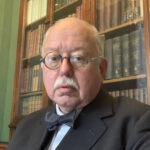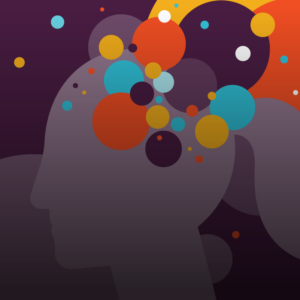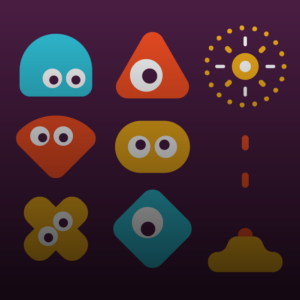Organisational success relies heavily on teams working well together. That’s no surprise. Less well understood is the role of cognitive diversity. Harnessing the viewpoints of people who think differently, who approach challenges from varied angles, is key to improving team performance. To creating teams with the perspectives needed to meet new challenges and thrive.
Understanding your teams’ natural cognitive diversity, or lack of it, is vital to ensuring that all your people can fulfil their potential. Here, we explore how a mastery of team dynamics can empower leaders to boost collaboration, creativity, and productivity.
We show how you can cost effectively harness and manage the cognitive diversity within your organisation, to make work better for all.

Mastering team dynamics through cognitive diversity
“No one can whistle a symphony. It takes an orchestra to play it” - H.E. Luccock
For progressive people leaders, creating extraordinary workplaces and high performing teams is critical in today’s rapidly evolving business landscape.
And, where innovation and adaptability are paramount, cognitive diversity has emerged as a crucial factor in achieving success.
Studies have shown that groups of people who think differently and have varied responses are proven to create better solutions and are more likely to produce solutions that others may not have considered. This expands the pool of possibilities and increases the likelihood of finding uniquely effective answers. Decision making is stronger.
Of course, there’s always a ‘but’. The reality is that you don’t usually get the opportunity to cherry pick your team – most existing teams lack natural cognitive diversity. And even if you could magic a cognitively diverse super team, bringing people with differing perspectives and ways of problem solving can be a recipe for disaster. Conflict with peers and managers can contribute to increased stress, adding to attrition and high levels of absence.
Within all of this, the pressure continues to grow for leaders to focus on creating excellent cultures, prioritise wellbeing, lead on ED&I and manage hybrid working. With the teams you are given not even being in the same place a lot of the time, managing their dynamics has become even more crucial.
So how can you harness unique strengths, perspectives, and thinking styles of team members, at the same time as fostering a collaborative environment that fuels creativity, problem-solving, and productivity?
In this post we answer this question by delving into the nuances of cognitive diversity:
- Understanding cognitive diversity
- The reality of cognitive diversity in most teams
- Measuring cognitive diversity
- Harnessing team dynamics
- Improving team performance
- Achieving this across your whole organisation.
In short – how to transform all of your teams into high functioning units and create better places to work for all.
Understanding cognitive diversity
In a nutshell, a cognitively diverse team is a group of people with varied cognitive preferences. They tend think or behave differently. It includes things like the way we process information, how we see the world, and how we make decisions.
For example:
- Does your team contain both Extroverts and Introverts?
- Do you have a balance of people who think using logic verses those that prioritise emotions?
- Do you have people who make quick decisions and others that will deliberate over all possibilities?
- Do you have some people who are thinking about the bigger picture and others who are in the details?
- Do you have a healthy mix of risk takers and risk avoiders? …
… the list goes on. In fact, there are an incredible 30 facets of personality that can affect a teams’ cognitive diversity
With all this potential, any one team is likely to have some areas of natural cognitive diversity, but there are also likely to be cognitive blind spots…
Cognitive blind spots
Ever heard the saying: ‘Hiring in your own image’?
It refers to leaders bringing on employees they perceive as being like them in the belief this will create more harmony, making it easier for everyone to do their job.
This ‘mini-me’ phenomenon has a psychological footing in something called ‘functional fixedness’ and has been proven to result in reduced cognitive diversity. Less creative problem solving – but also less conflict.
For example: an accountancy job naturally attracts people who are dependable, diligent, enjoy structure and are good at decision making. Conversely people who thrive on variety and creatively are unlikely to enjoy being an accountant. This inevitably leads to teams of accountants being cognitively uniform.
In fact, most work functions require a reasonable amount of cognitive uniformity to get the job done.
On the surface, this is great. It feels good to be in a team of people who all think the same, everyone gets on. But a cognitively uniform team inevitably leads to blind spots, which is bad news if you want high performing teams.
Blind spots can ruin the successful functioning of the team and reduce the overall competitive advantage of the business.
For example: If you have a team full of people who make quick decisions you are likely to miss opportunities and the most innovative solutions (think accountants). Conversely if you have a team full of people who deliberate and debate every possible solution you might not ever get anything done (think marketers).
One of the most damaging manifestations of blind spots is groupthink.
The dangers of Groupthink
Groupthink, a term inspired by George Orwell’s classic novel ‘1984’, can occur when everyone thinks the same way, or even when a majority think in a certain way and the minority are forced to conform…
Studies have shown that while relationships on the surface may appear to be smooth, groupthink creates a pressure to conform. This results in a lack of individual psychological safety, which in turn breeds a lack of confidence to speak out or challenge. It is common for people, both in general society, and within a company culture, to sacrifice their own diversity to feel included. This can hinder the team’s effectiveness and lead to inefficiencies, miscommunication, and missed opportunities.
For example: If you have team with a majority of extraverts or a company culture of extroversion (which is common), the minority of introverts may feel a pressure to behave in an extroverted way to fit in. This can result in the Introverts being too psychologically exhausted to operate at their best. Their input and the potential benefit of their cognitive diversity can be lost.
So, what do you do to avoid blind spots and groupthink?
A simple solution would be to change your team and create more cognitive diversity. But in reality this isn’t usually an option; you rarely get to hand pick the team you work. And, as discussed above, many business tasks require a certain amount of cognitive uniformity to get the job done.
Much more realistic solutions are:
- Be aware of your pitfalls: understand your blind spots and develop strategies to mitigate against them
- Value the minority: use the diversity you already have in the most positive way
- Develop inclusion: create a safe space for alternative viewpoints to be heard
- Prevent fireworks: turn the differences you do have into healthy debate as opposed to conflict
With all these solutions the first step is understanding what you already have…
How to measure cognitive diversity
Understanding cognitive diversity starts with understanding the cognitive preferences of each of the team members. Getting at this information is simple. You test.
The most significant shift in defining team dynamics has been the widespread use of psychometric testing. While not new (it can in fact be dated back to the 1800s), 70% of the Fortune 500 and 80% of the FTSE 100 now use psychometric testing.
These tests allow you to understand the psychology of any individual, which can in turn be used to understand the psychological make-up of a whole team.
So, having worked out the composition of your team, what’s next?
Mitigating against the blind spots and reaping the benefits of any natural cognitive diversity requires effective leadership and a deep, ongoing understanding of yourself and your team’s dynamics.
Whatever your reasons for wanting to improve the way your teams work, you already know the solution is not as simple as putting on a cape or shouting, ‘Avengers Assemble!’
The good news is there are tried and tested ways of harnessing cognitive diversity and avoiding groupthink. For years, psychologists have been bought into big organisations to help foster high performing and innovative teams. The science for doing this is very well established. You can do it today with all your teams.
But with all things that sound too good to be true there is usually a catch…
In-depth psychological work on a team’s dynamic is the privilege of the elite. High quality psychological tests are expensive in the first place and using them effectively in the context of a whole team requires expensive consultancy from highly qualified psychologists. Many of the outputs are loaded with terminology and barriers that only a psychologist can understand, which prevents widespread use.
At Cognisess we firmly believe that harnessing cognitive diversity is so important it shouldn’t just be the privilege of the C-suite, or those with deep pockets.
Increased conflict, difference in perspective, low morale, high attrition – these aren’t just the experiences of those in the higher echelons of an organisation. With cultural and social diversity also in play, it is high time that all managers had the power to support all individual employees to become part of a cohesive, highly functioning whole.
How to enhance inclusive productivity with Team Dynamics
"Great things in business are never done by one person. They're done by a team of people" - Steve Jobs
Two years ago, at Cognisess, we thought it was high time someone smashed the elitist system of only allowing those at the top to harness the power of team psychology. So that is what we did.
Working with organisational psychologists, Ronald Collins, and Wendy Zhu, we set about creating an intuitive, easy to use tool that allows anyone to understand their team’s psychological make up. Most importantly we wanted the tool to provide clear and easy to understand strategies for mitigating against blind spots and harnessing cognitive diversity.
After a lot of work, and validating it against the world’s leading psychometric instruments, our ground-breaking tool is finally here.
In the ongoing interest of breaking the barriers created by complex terminology we have simply called this tool:
Team Dynamics
In the background this tool uses the very best psychological science. But on the surface, it’s easy to use. You don’t need extensive psychology training – anyone can be quickly trained to reap its benefits.
We think this tool is so fundamental, that once you have signed up to the Cognisess platform, it’s free for you to use on any team, at any time, with no extra charge.
Team members all complete an inbuilt gold standard psychological assessment (for free) and then the tool interprets all the results to provide immediate, clear and easy to understand insights on the group. These include:
- Where your team’s blind spots are
- Bespoke strategies for avoiding groupthink based on the team’s unique blind spots
- Where individuals might be in the minority and be at risk of being forced to conform.
- Bespoke strategies on how to avoid crushing the diversity when there are minority groups
- How cognitive diversity can be improved if there is the option of new hires or reshuffling your existing teams
- Where you already have natural cognitive diversity in your team
- Where and how your team’s natural cognitive diversity might lead to conflict
- Bespoke strategies for turning any potential conflict into healthy and supportive debate
- Strategies for providing your team space to reflect and get to know each other in a psychologically safe way
- Strategies for ongoing feedback and review
All the insights provided are unique to any one team and once all your people have done the psychological assessment you can re-use it on any combination of people at a click of a button. Or you can assess new members and instantly see how they affect the team dynamics. There are no limits on the number of times you can use it.
As mentioned, all of this is free to anyone already signed up to our platform. But if you are not ready to sign up to our full platform you can try out the Team Dynamics tool on its own in a one-off guided taster – a fully supported session that will be hugely beneficial to any one team and will show you how you can use the tool yourself for more teams.
When we started creating this tool, over two years ago, we thought it was going to be ground-breaking. Now it is finally ready to be used we find ourselves in world where is seems ever more relevant and important.
“We live in an age where employees are being tasked with solving some of the biggest challenges in ever new and innovative ways. Many organisations are rightly thinking about demographic diversity as a way of ensuring representation in problem-solving. Not enough are considering cognitive diversity. If leaders can harness this, research shows it can be more beneficial to performance than demographic diversity alone.”

Wendy Zhu
Wendy Zhu, PhD Organisational Psychology Researcher, University of Bath, and Cognisess Consulting Psychologist
Final thoughts - why you need to use Team Dynamics now
Supporting cognitive diversity in a psychologically safe way
Since the pandemic mental health at work has rightly become a much higher priority. But whilst employers feel they are doing more than ever to support employees, lost workdays and reduced productivity due to stress continue to impact business development.
74% of companies say ensuring employee wellbeing is important to them, yet 45% of workers say their employees still don’t support their wellbeing World Economic Forum
A 2020 CIPD survey revealed that 24% of employees feel challenging issues like bullying and harassment are ignored within their organisation, indicating a management problem. The same CIPD survey found that 32% of individuals who experienced conflict reported their people manager exacerbated the situation, while only 40% of people managers received training in people management skills.
Extensive research is now showing that managers are key to mitigating against stress and managing conflict. (ref)
This is where understanding your team’s psychology and knowing how to harness team dynamics becomes ever more crucial.
The key is in reframing conflict.
"Conflict is the beginning of consciousness." - M. Esther Harding
Conflict is usually seen as a destructive and divisive force, stifling cohesion, and causing rifts. A cognitively diverse team – different viewpoints and world views, different life experiences and thinking patterns – is primed for disagreement at best, full scale meltdown at worst.
Conflict can be a necessary by-product of the melting pot of views. And understanding that doesn’t mean it is always plain sailing. But by providing people with knowledge of themselves, each other, and the rest of the team, they’re able to navigate conflict with maturity, empathy, and collaboration.
Continuous understanding of team dynamics makes it possible to reframe moments of conflict as positive and reactive opportunities for growth.
Like the conductor of a well-honed orchestra, understanding how each individual instrument contributes to the whole is crucial to creating a harmonious and high-performing team.
Creating harmony in a diverse world
As we rightly promote ever more cognitively diverse teams, managing conflict is only going to become more relevant. Supporting a teams’ natural cognitive diversity in a fast-paced environment is no mean feat and can add to existing pressures if not handled effectively.
Fostering an inclusive culture is central to this, one in which all team members feel respected and encouraged to share their unique perspectives. Creating an environment that embraces diverse viewpoints and encourages open dialogue is crucial for harnessing the full power of cognitive diversity and the resulting ability to problem solve.
Successful human progress relies on all of us understanding each other better, embracing varied perspectives, problem-solving quickly, and improving our decision making.
That’s the future we’re here for
Start your journey today. Embrace cognitive diversity using our Team Dynamics system and watch your people and organisation soar to new heights of success.
“As we move into a world where much of the routine individual work can be done with AI, a unique contribution people can make is through working together in groups and teams. Team Dynamics is an accessible way for all teams and facilitators to increase and promote self-awareness. It enables respect for diversity and supports the inclusion of those with different but complementary approaches, which is at the heart of effective teamwork.“

Organisational Psychologist and Psychometric Specialist.
Sign up to our Newsletter
Keep up to date with a collection of articles, resources and insights for people hiring, managing and developing your people.



